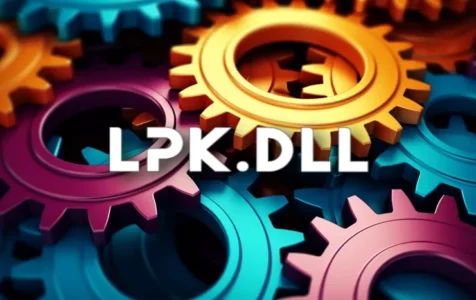The file lpk.dll stands for “Language Pack” Dynamic Link Library and forms part of the core of the Microsoft Windows Operating System. It resides in the “C:\Windows\System32” directory, and on 64-bit versions of Windows, a duplicate but necessary version exists in “C:\Windows\SysWoW64.” This file helps manage the Language Packs used by Windows and other applications for displaying dialogs and messages in the correct language.
The importance of lpk.dll is highlighted when applications fail to start or display error messages citing the absence of this file. It’s embedded within System Resource Protection, illustrating Microsoft’s intention for this file to play a critical role in the system’s integrity.
The paradox of lpk.dll arises from its essential status while being a popular disguise for malware, which often leads to its unintentional removal by antivirus software. Restoring the file can usually be done with a simple “sfc /scannow” command executed from an elevated Command Prompt, followed by a system restart.
However, criticisms of lpk.dll are not absent. Some users voice concerns over its safety, suspecting potential dangers given its ability to be injected into all running processes and potentially manipulate their behavior. This underlines the complexities of DLL files—they encapsulate critical components for programs and browsers but are also potential vessels for malware transmission.
Expert Tip: For smoother PC performance, consider using a PC optimization tool. It handles junk files, incorrect settings, and harmful apps. Make sure it's right for your system, and always check the EULA and Privacy Policy.
Special offer. About Outbyte, uninstall instructions, EULA, Privacy Policy.
Is It Safe to Run Lpk.dll?
Yes, when it’s the legitimate version from Microsoft. The lpk.dll file has been a part of the Windows operating system for several versions and is generally considered a safe file from Microsoft. However, one must be vigilant, as cyber threats are known to masquerade as valid DLL files, including lpk.dll.
Can Lpk.dll Be a Virus or Malware?
Malicious entities often exploit the names of legitimate DLL files to sneak onto systems undetected. Therefore, the presence of lpk.dll does necessitate a security check. It is recommended to verify the digital signature of the file to confirm its authenticity. If the “Verified Signer” status is listed as “Unable to verify,” there’s a cause for concern, potentially indicating a malicious file.
How to Fix Lpk.dll Related Issues?
Users encountering problems with lpk.dll can follow a series of troubleshooting steps to rectify the issue:
Perform a system restore to bring back missing DLL files, or use the System File Checker tool to repair corrupted DLL files on your Windows system by entering “sfc /scannow” in Command Prompt with administrative privileges.
If removal is necessary, users can uninstall the file via the Control Panel under “Programs and Features.” It is crucial only to do this if you’re certain that the file is not legitimate or necessary for Windows.
It’s worth noting that despite being designed for Windows Operating System, there are variations in the file size of lpk.dll, underlining the importance of ensuring you have the correct version for your specific system.
User Experiences and Community Discussions
Community discussions serve as a valuable resource for user experiences and potential solutions. Users report varied issues with lpk.dll, ranging from error messages that prevent the use of their computers to conflicts with installing new software due to the system’s inability to verify the file. Some have found relief by reinstalling Windows, indicating severity at times when standard fixes fall short.
For users experiencing issues and seeking additional support beyond the measures listed here, it’s possible to get more personalized help. You can turn to the community forum for assistance from tech specialists and others who have encountered similar problems.
In conclusion, lpk.dll is a vital component of the Windows ecosystem, required for applications to function correctly in different languages. While inherently safe, it can be mistaken for or replaced by malware, making knowledge of its nature, safety, and repair methods essential for maintaining a secure and fully functional system.
